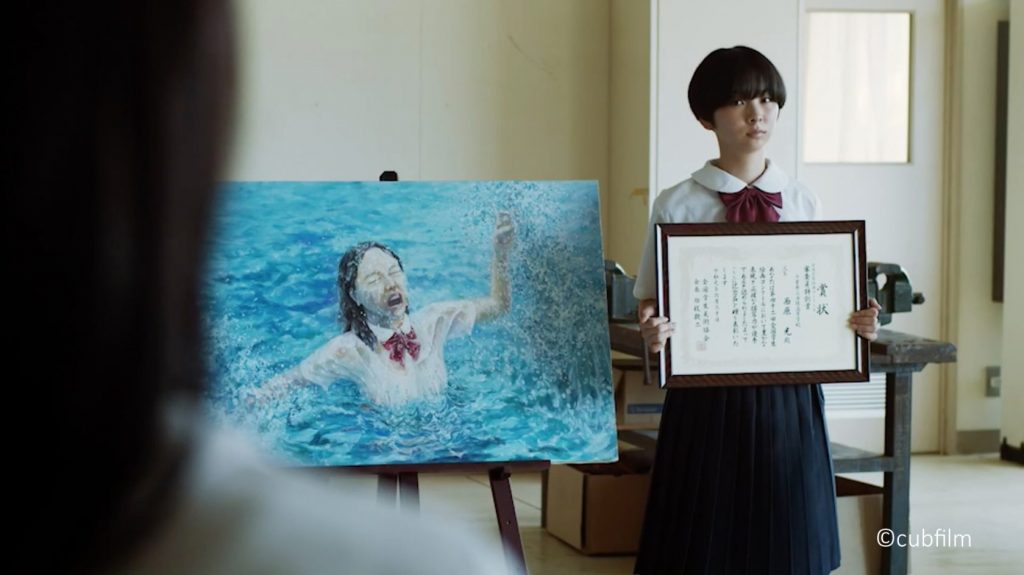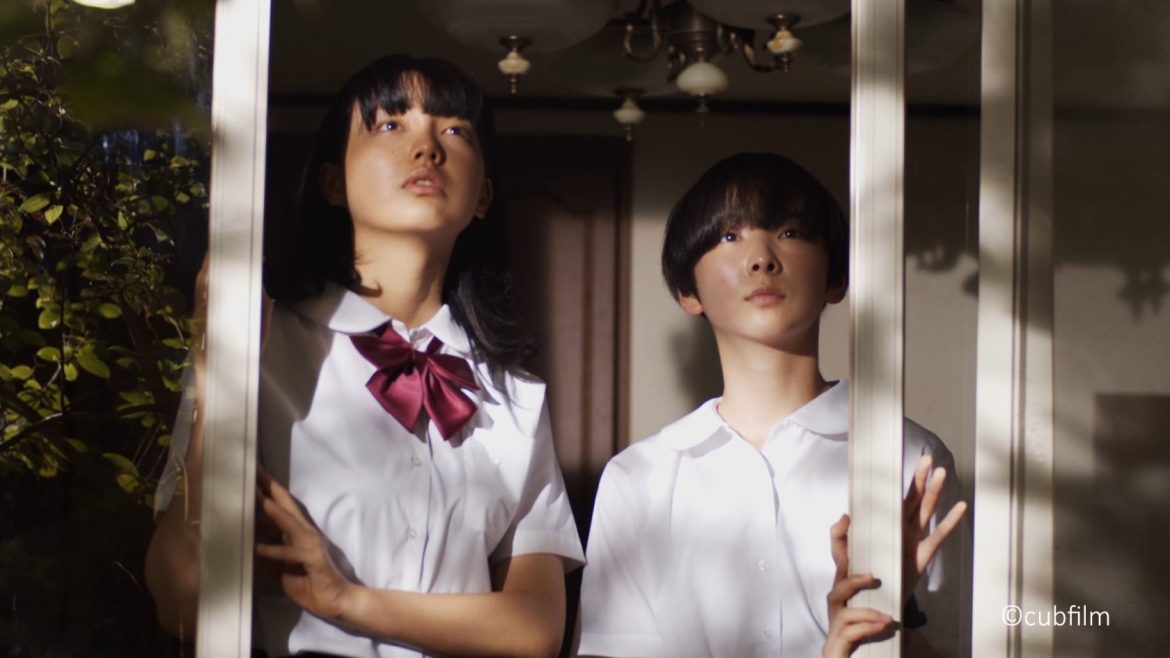In ‘A Muse Never Drowns’, John Tawasil examines the many ways we draw upon our lives in the creation of art. This film is one of the twelve feature films in this year’s Japanese Film Festival – Independent Cinema.
Art binds us together in many different ways. It helps us experience times and places long gone, it helps us move on, it helps us communicate feelings that are deeply held. Nozomi Asao’s debut feature film is a love story, yes, but perhaps not in the way one expects.
A Muse Never Drowns begins with a frustrated Sakuko (Miku Uehara), a student who aspires to go to an art college. The problem is, she isn’t finding much inspiration with her drawings. Sakuko is accidentally pushed by a classmate as she draws on a pier, and the image of a soaked Sakuko catches the eye of art prodigy Saibara (Kogarashi Wakasugi), who eternalizes the moment into an (in)famous painting. Of course, Saibara has her own reasons for drawing Sakuko in the first place.
Many have drawn comparisons with this film and Celine Sciamma’s Portrait of a Lady on Fire (2018) in terms of its story similarities and its exploration of gaze. But this film diverges from those similarities in significant ways – it can be said that A Muse Never Drowns concerns itself with artists and art: that is, in how we draw upon our own lives in the creation of art. Sakuko may not be an experienced painter, but in response to the many impending changes in her life – a new sibling and an impending relocation that threatens to separate her from her friends – she begins to sculpt a boat out of junk lying at home. She appropriates various things, takes them apart and puts them together, and it brings her joy. And of course, boats are hardy, able to withstand even the strongest typhoons, able to move from place to place. “She’s always been a tinkerer,” her father tells his wife. Sakuko isn’t a bad artist, she’s just suited for a different medium.

Saibara’s motivations, on the other hand, fall more into her own unexplored feelings for Sakuko and the insane pressure she has put upon herself after her first painting. Her own doubts and insecurities are preventing her from accepting her art, blemishing an otherwise perfect work. “I can’t make anyone happy,” she tells a mutual friend.
It is when Sakuko and Saibara come to terms with their own reasons for taking up art – either to find one’s self or just to find something to do – that they overcome their insecurities on why they want to do what they want in the first place. Sakuko later asks her father if doing a hobby for a living, asking if artistic pursuits contribute to anything meaningful. He answers her that hey, “it’s got to be worth a try.”
A Muse Never Drowns is a wonderful love story where art itself is the object of affection – in creating it, in finding your own meaning in it, in sharing that meaning with the one you love.
You can still watch the rest of the twelve films in this year’s Japanese Film Festival – Independent Cinema until October 31, 2023. Check them out here.


